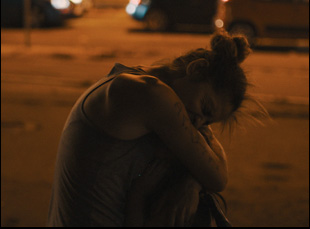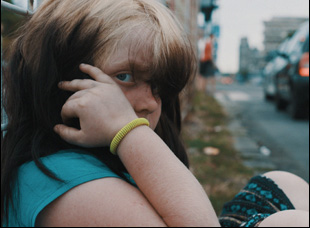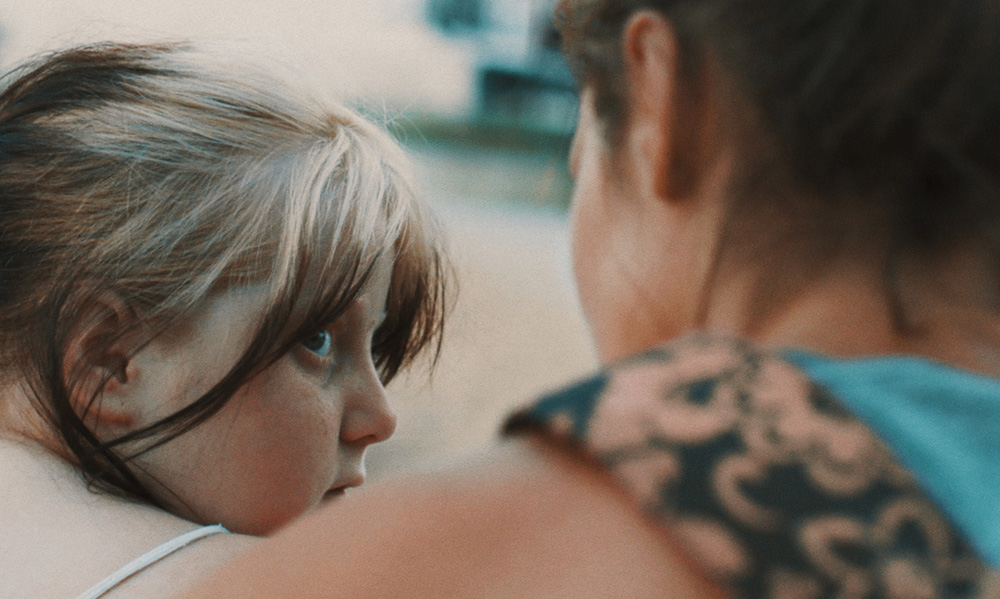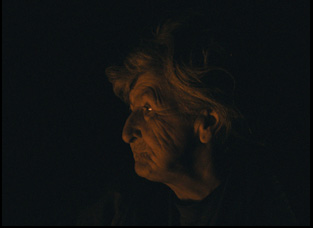It’s one thing at the start of “Museum of the Revolution” to suggest what might’ve been when director Srdan Keča includes a glimpse of the groundbreaking for what was intended as a bold new future in Yugoslavia with a community coming together to meet the challenges of the industrial revolution, working together to lay the groundwork for factories and other metropolitan structures on the farmland that had sustained them for generations. Presumably, this was the same spirit that guided the Croatian architect Vjenceslav Richter when he was tasked with envisioning a great cultural center in Belgrade that would preserve the legacy of Yugoslavia as it existed during the socialist era, which many in the country held a great deal of nostalgia for. Yet while Richter saw the construction on the museum begin, the fact that it continues to stand half-finished in what is now Serbia has become an entirely different testament to the history of where it stands, somehow enduring the breakup of Yugoslavia during the 1990s and the wars fought during the tyrannical reign of Slobodan Milošević while clearly worn down by all that’s happened in front of it.
When Keča’s cameras start to roll, there isn’t much to see — quite literally, the filmmaker roams around in the dark basement of the museum where after a few minutes, a flicker of fire in the corner announces that he’s not alone in the building and the sound of an candy bar wrapper being crumpled gives away the presence of Mara, an old woman who has found shelter in the planned museum, along with her granddaughter Milica while her daughter Vera makes money offering car washes at busy intersections above ground. The trio of women may feel quite small in the grander scheme of things, quite literally swept under the surface of modern Serbian society, but Keča recognizes that the experience of the three generations of women is monumental as they may reside in the shadows but their hardships illuminate how easy it’s been to fall through the cracks of a country where the ground has never been stable. As Vera continues to send care packages to her husband in prison, overlooking the past abuse she suffered at his hands, there are practices you realize that have gone unquestioned when survival is always front of mind and trips out to the local river to wash clothes and bathe become reminders of a less complicated time for the entire culture.
“Museum of the Revolution” gently lets the reality of the women’s lives emerge, but a recognition of how much they’ve endured becomes quite powerful and the film has resonated with audiences since premiering at IDFA in the Netherlands in fall of 2021 and making its way around the globe with recent stops in the U.S. at the San Francisco Doc Fest and Big Sky. Recently, Keča spoke about the investment of time required to capture such an evocative portrait of people and the place they’ve been shaped by, how the structure of the film evolved and discovering what truly mattered in the edit.
It started with an installation piece that I made together with a group of architects for the former Yugoslav and now Serbian Pavilion at the Venice Biennale of Architecture in 2014, and it was a three-channel installation site specific for this pavilion [with] a screen on [each] end of the pavilion, dedicated to the ideas of the architect and the current state of the project and then the third screen, which was on the other end of the pavilion, was a restaging of what the museum would have looked like, with rope and helium balloons and things like that. It was quite lofty, this installation piece, and actually on the first day of shooting when we went into the space, one of the first people we met was Mara and my assistant director Radoslav Cvetkovic and I kept having a relationship with her over the next couple of years. We were just two friends who kept coming back to visit Mara and her late partner over the next couple of years.
I had a hunch that there was more there that we could make a feature film from, but couldn’t find a way into it in a way and didn’t really see what the narrative would be until one day I saw Mara play with Milica, the little girl in the film, and when I saw that energy between the two of them, I felt like, “Okay, here’s a relationship that we can start building a film around.” We started shooting the next day, and at that point, I thought it would be suggesting a threat that was coming from the outside because I knew they couldn’t stay there [in the abandoned museum space] for a very long time, so I thought here’s a film that would be just building this little kind of utopia of childhood within this dystopian space. That’s what we started building the film around. But then it became a lot more complex when Vera joined and events started unfolding a lot faster than we thought they would, so the film ended up being more than a suggestion of the transformation of the space, but really clearly showing that this is what’s happening.
I imagine those early days might have felt like filming inside a cocoon versus going out into the city once you follow Vera. Was that interesting to navigate?
Yeah, very much so because in the early days, and even when we were shooting the installation piece, we would spend most of the day down in the basement and then emerge in the evening and because the place is in the middle of the city, essentially, you just go out and you feel like you’ve spent time in a very different world, which I think helped build this sense for the film, that we are in this world of theirs, and even when they leave this space, we’re still in their world, which has very few contact points with the more visible parts of the city. That’s something we try to respect, which is why once they leave the space, we’re very close with them.

I thought of that space as mainly tied to childhood in the film. Because we introduce Milica very early on, everything in the way that we can build that early part of the film was quite mysterious. The first time we see Mara, we don’t see her — we see the branches on her shoulder that she’s carrying into the space and then we see the fire and then eventually through the fire we see her face. And then we get to know Milica a little bit and when they start their little game, this is when we actually start revealing more of the space when they’re playing. When they’re knitting actually together around this candle, at that point we start expanding to both push us forward in time as the seasons start changing, but also we reveal a little bit more of the space, so rather than present it as this merely dystopian place [where there are] remnants of what was supposed to be there, I decided to work from within and think about what this place means for the kids who live there, because it is their childhood, right?
Was it difficult to decide how much context you have upfront? That brief burst of archival footage does a lot of heavy lifting when the rest of it takes place in the present.
Yeah, that was one of the trickiest ones for sure. We had cuts of the film that had a lot more context and was more clearly laid out, and we even went so far as to film the plans for the museum with a 16mm camera to produce an archive that would go at the front of the film that would contextualize things a little bit more because there wasn’t that much archival footage about the project. The authorities were never sure whether they were actually going to build it or not, even when they started building it, so the project was wasn’t so celebrated as much in the media. But then we ended up going back to those films that are at the start of the film now, which are films about the construction of New Belgrade and you have this vast open space, which is marshland and that is now a part of the Belgrade that houses half a million people. Without it, the film doesn’t work at all in a way, but the way that it works [now] is that it just frames this dreamlike space [where there was] potential in the beginning in the early days of socialism, a sense of “We’re going to build the city here. We’re going to build the society.” And then you cut to the present day where none of that has really materialized.
A lot of creating that dreamlike space has to do with how we design the sound in the beginning, to never quite place you anywhere so that the sounds that you hear are not easily recognizable and easy to categorize and then we wanted that harsh cut to the present day. Later on, we don’t follow up on that context because we really wanted the film to stay in the present, but that baseline of that dream that is constructed in the beginning is then hopefully an association that maybe subconsciously is made throughout the film. For example, we follow up with the fire being the same color as the archive and then that orange tinted element of the film is a thread in the film, like the lights in the scenes where we’re really developing [Milica and Vera’s] relationship [where] an orange light is contrasted against the more blue color of the colder environment that is surrounding them.

I would say both a lot and not a lot because the film did stay true to the original intentions and I had a paper edit on the wall throughout the shoot and scenes that I wanted to shoot that were not necessarily descriptions and definitely not dialogue, but more like the emotion we were going after in a certain part of the film. And the pivotal moment was when Milica and Vera go to the river and they have this conversation about leaving Belgrade and that just happened one day, and there was a decision that needed to be made and we just followed that. It became a really central moment in the film and then I tried to build the film around it. One other scene that we learned was really pivotal in the edit was [when] Mara and Milica are sitting next to the water — and both of these scenes are next to the water somehow. It seemed [generally] elements are very important in this film — fire and water — and [we] learned in the edit how pivotal it was really to have the three of these three generations of women in one place, sharing their stories. There’s no other moment in the film where they do that together, so it was very important to have that as a central scene in the film.
Were there certain things that you wanted to show as part of this when it is constructing this broader legacy of the former Yugoslavia than just of this single family?
Yeah, the primary way that it informed [how] the film is structured is this idea of the imported dream, suggested already in the title “Museum of the Revolution,” and then the fact that it’s an unfinished museum on top of that. That it never became what it was supposed to become is very true in and of itself as a larger metaphor of the Yugoslav society and what came of it and that parallels the precarity of the protagonist’s lives [where] every day or every week they would have an idea of how they’re going to live and then that doesn’t materialize. Then there are more specific ideas. For example, Milica and Vera are Roma, and that is not addressed specifically in the film, but my idea was to play against the usual representations of the Roma.
The Roma community [is always portrayed] as this very specific culture with its own problems, and I wanted to blow that up a little bit and say, “Well, just look at them as anyone else,” and what some people I think take away from the film is that we’re trying to say, “These people lived better in socialism, and now in capitalism, they live worse.” But that’s not at all what we’re trying to suggest. This is why the archival [material] that we use in the opening of the film is from the really early days of the construction when it was all about a society having a certain dream, which was egalitarian and was at that point inclusive of the Roma and of anyone really. The idea was “Let’s build a society for everyone who lives here,” and this is in stark contrast to today, where there is no dream. There is no sense of where is this society going. There is no sense of a project, or a common shared set of values for what we’re trying to achieve. And if there is one, it’s definitely not one of egalitarianism, so this is the real contrast for me. Not that the circumstances for the Roma in, say, the ’70s were better than they are now. I’m not even like engaging with that. I’m engaging with what’s happening in people’s minds.

I haven’t really been to that many screenings of the film, but the film has gone to a lot of festivals, and the reactions that I have seen from audiences were very interesting and varied. What surprised me most is seeing how much it did communicate because the way I was thinking about the film was to primarily address the audience at home in Yugoslavia. But there’s ways that it does communicate to audiences abroad who have no familiarity with the context at all and in some ways, I feel like some of the ideas translate better actually to those audiences who have no context than to those who come to the film with a lot of context. It’s interesting because maybe it’s easier to look at the more abstract ideas when you don’t know so much of the specifics.
“Museum of the Revolution” is currently traveling the festival circuit. A list of future screenings is here.





